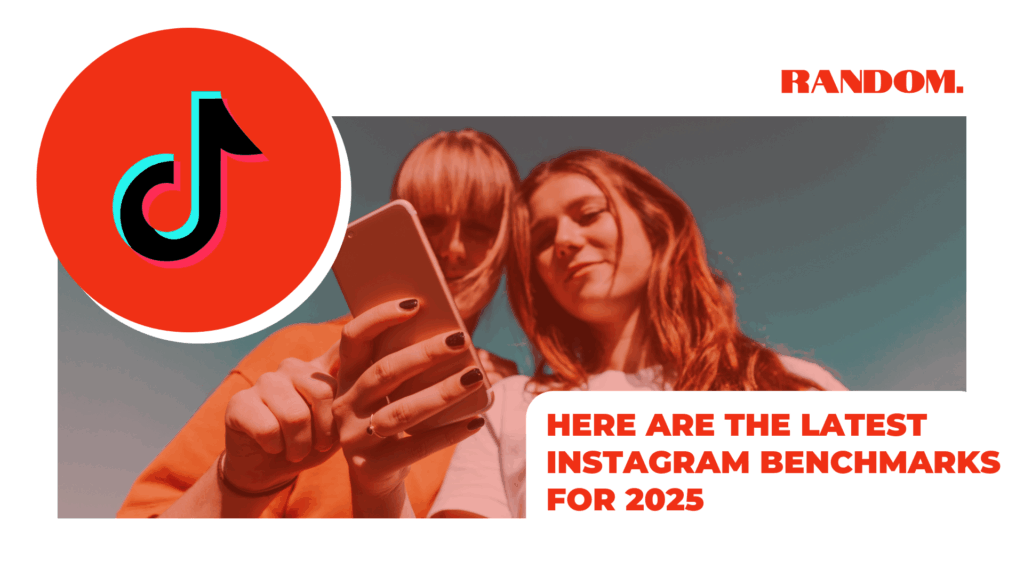
A lot has changed for Instagram over the past few years, but the platform remains one of the top powerhouses among social media platforms in 2025. We thought this would be the perfect opportunity to evaluate the 2025 Instagram benchmarks—our very first iteration on this platform.
Once again, Rival IQ released its yearly study of key social media benchmarks for 2025, including Instagram. In this post, we will:
Benchmarking is a key part of the analytics process, allowing you to compare your social media results against specific thresholds or standards. This enables you to set realistic objectives, optimize strategy, and identify what's best for your business.
The Rival IQ report focuses on metrics relative to industry benchmarks. However, you can also create your own benchmarks for a more tailored understanding of your marketing performance. Learn more from our experts about personalized benchmarking!
Also, feel free to check out the TikTok benchmarks if you're extra curious!
Similar to most benchmarking studies, we examine engagement rates. Below are the corresponding rates across different industries:
Alcohol: 0.37%
Fashion: 0.15%
Financial Services: 0.26%
Food & Beverage: 0.40%
Health & Beauty: 0.14%
Higher Ed: 2.10%
Home Decor: 0.14%
Influencers: 0.58%
Media: 0.44%
Nonprofits: 0.56%
Retail: 0.16%
Sports Teams: 1.30%
Tech & Software: 0.33%
Travel: 0.34%
The overall median across all industries is marked at 0.36% for 2025.
There are two primary ways to calculate engagement rates on Instagram, which are often the two formats you'll commonly see. The list above uses Average Engagement Rate Per Post (by follower), which is likely calculated by taking the total engagement on your content, dividing it by the number of posts, and then dividing that result by the number of followers.
You can also calculate Average Engagement Rate Per Post (by reach), which we often like to do. This is calculated using post reach instead of followers, and aligns more closely with Meta’s native way of calculating engagement rates on the backend and better accounts for engagement from both non-followers and followers.
According to Rival IQ, engagement rates across all the listed industries declined compared to the previous year. However, this doesn't necessarily mean that total engagements on the platform are down, as a decrease in engagement rate can also result from an increase in audience size — a simple example of the denominator effect.
We do have a one-word answer when it comes to content type: reels. While Reels generate strong engagement, their reach—particularly among non-followers—far exceeds their engagement levels, making them a powerful tool for visibility and discovery rather than pure interaction. In our observations, we notice frequent discrepancies in the number of users who get shown reels compared to other content types on Instagram. In 2025, the platform continued refining its focus on video content.
We can also notice that Higher Ed and Sports Teams are the only industries marked by Rival IQ to exceed a full percentage point in engagement rate. For sports teams, fan loyalty and passion drive high interaction—supporters celebrate wins, rally through losses, and share memorable moments, creating a vibrant and engaged fan base. Similarly, higher education institutions foster pride and belonging among students, alumni, and staff. The “alma mater” connection encourages users to engage with content that reflects shared experiences, milestones, and traditions, making these communities highly active and engaged on social media. There is some integration of one of these industries towards the other.
To conclude, looking beyond these average metrics across industries is essential. As mentioned, this includes factors such as content type, tendencies on the platform, varying audience sizes, posting cadence, and much more.
Want personalized help with benchmarking strategies to optimize your social media results? Chat with our team today!